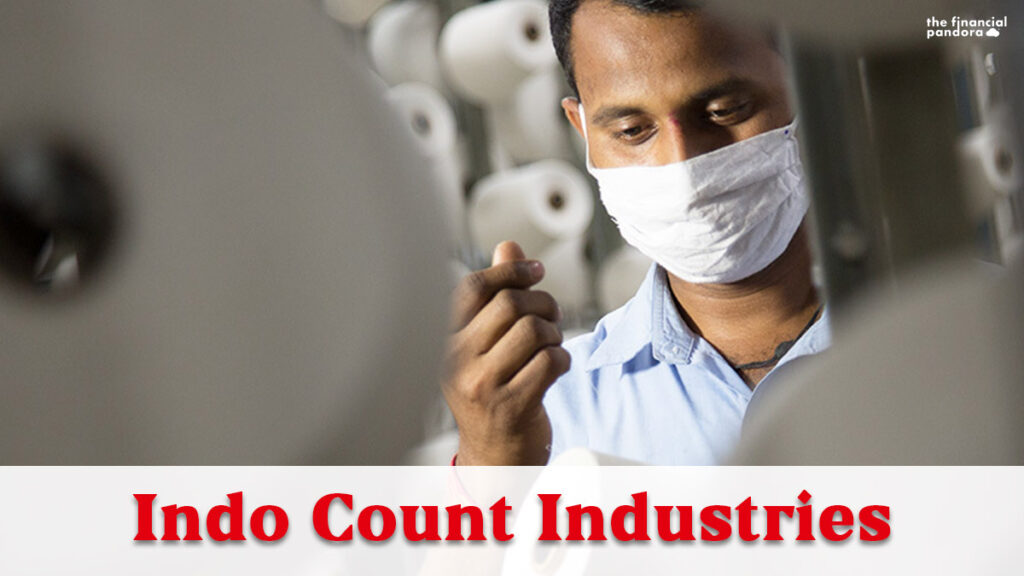Introduction
Incorporated in 1988 and having HQs in Mumbai (India), Indo Count Industries Ltd is a Home Textile Manufacturer with a diversified product range. The product mix spans from bedsheets, fashion bedding to utility bedding, and institutional bedding; the company exports to around 54 countries worldwide. The company was initially set up as a yarn spinning business and then forward integrated into the manufacturing of home textiles in 2007. In the last few years, this new home textiles business has become the gold pot for the company with higher margins and increasing demand. Home textiles’ revenue contribution has risen from 58% in FY12 to 93% in FY20. Among the Home Textiles business, Sheet Sets contributes around 86%. On the other hand, fashion, utility & institutional bedding hovers around 14%. The latter segment is high-margin based.
The management is making conscious efforts to continue its focus on the home textile business and reduce its dependence on yarn spinning. It has low margins and is cyclical. The decline in the yarn segment to just 7% in FY 2020 revenues makes it evident.
Exports are a driving factor for the company’s business. The US contributes to 3/4th of the total revenues, Europe makes up 15%, and the remaining 10% is India, Australia, and other geographies.
End Customers:
In the US, it caters to Walmart, Target, Bed Bath & Beyond. Home Centre and Shoppers Stop make up their Indian customers.
Competition:
It faces competition from the firms like Welspun, Himatsingka Seide, and Trident.
Product Portfolio
Bed Sheets: Flat sheet, Fitted sheet, Pillowcases
Fashion Bedding: Comforters, Duvets, Shams, Quilts, Coverlets, Decorative pillows
Utility Bedding: Mattress pads, Protectors, Pillows, Down Alt Comforters
Institutional Bedding: Basic white sheets, Shams & Pillows, Bed skirts, Duvet covers
Indo Count has 14 In-House brands (Boutique Living, Heirlooms of India, Atlas, Revival, The Pure Collection, Haven, Linen Closet, Put, Whole Comfort, True Grip, Purity Home, The Cotton Exchange, Color Sense, Kids Corner). Additionally, it has four licensed brands (Morris & Co., Harlequin, Sanderson, Scion) catering to 500+ stores pan India.
The company also recently introduced its B2C product offerings known as Layers, its mid-high segment called Boutique Living, and a D2C product called Boutique Living Luxury for the high-premium segment.
Management
Anil Kumar Jain (Chairman), Mohit Jain (Managing Director) & Kailash Lalpuria (CEO) have close to 100 years of combined experience in the Textiles sector. Thus, from a management standpoint, this company is well-positioned. The promoters have close to 59% holding for the last many years.
Financials & Outlook
The company’s growth has been stagnant over the FY16- FY 20 period with a 4 Year Revenue CAGR: 0.2%. It is due to the reduction in international demand, inflationary cotton prices, among others.
The company is now experiencing some green shoots due to the following factors:
- WFH is leading to export demand specifically in the US market as the focus is shifting towards home improvement
- Ban on Xinjiang China cotton imports (this region produces 87% of Chinese cotton) by the US
- Indian cotton is 30% less expensive than Chinese cotton, and the Indian workforce is three times cheaper than China.
- Capacity expansion of around 200cr (Brownfield).
These positives can be traced to the Indo Count’s Q2FY21 and Q3FY21 volume data. Both these quarters saw volumes above 20 million meters each v/s the usual range of 14-17 million meters. Also, India ranks second in the home textile exports with an 11% market share and the largest producer of cotton worldwide, making it a suitable Plus One strategy.
Competitive Advantage for India in the Home Textiles Market:
1. Raw Material:
The strength of the Indian textile industry is its powerful production of a varied range of fiber (yarns) from natural fibers like cotton, silk, jute, and wool as well as from synthetic ones like polyester acrylic, nylon, and viscose.
2. Aspirational Buying & Rising Incomes:
Consumer buying preferences have changed from need-based to aspiration-based. Customers are moving towards branded products, especially in the fashion segment. Higher disposable incomes and preferences for brands majorly in the emerging markets are a driving force for discretionary spending.
3. Structural Shift:
Due to the Covid-19 pandemic, many global brands are expected to reduce their reliance on a single region. India, the second-largest home textile exporter, is a big cotton producer that will likely benefit from the shift.
This post was written in collaboration with Asif Yahiya Sukri LLP. Asif Yahiya Sukri LLP provides unparalleled personalized financial services to a broad range of clients across different geographical locations. With a presence in the USA, India and the MENA region, they ensure that all of your financial decisions are made carefully and with your best interests in mind. They are innovators who understand what goes into building companies.
You can also reach out to them on info@aysasia.com
Follow Us @




